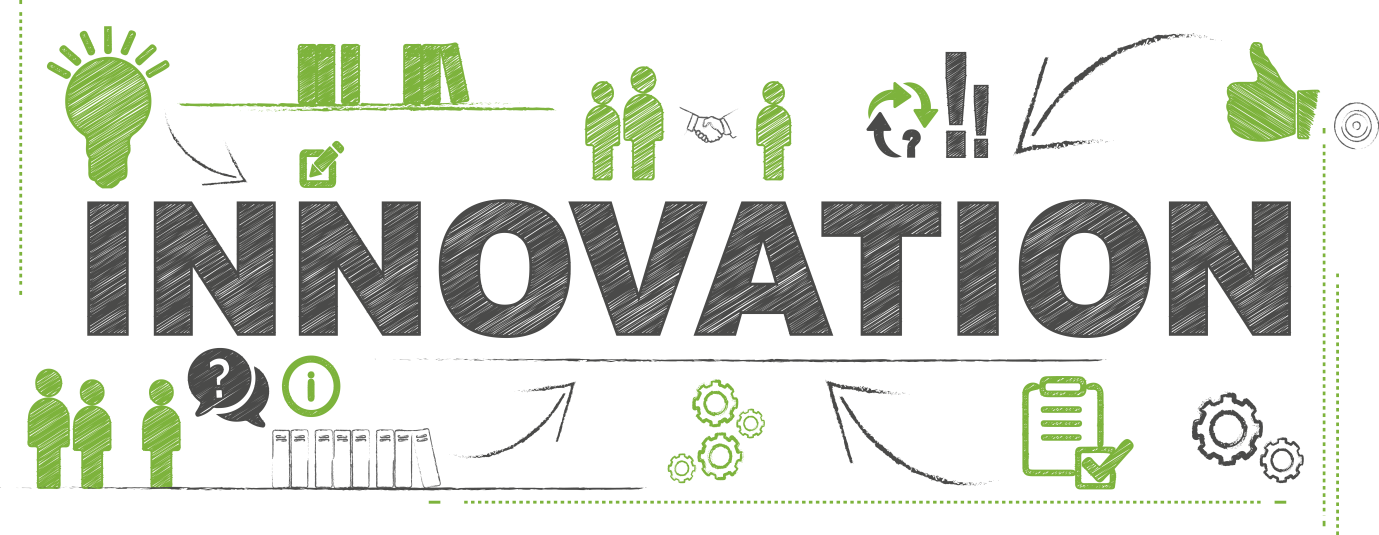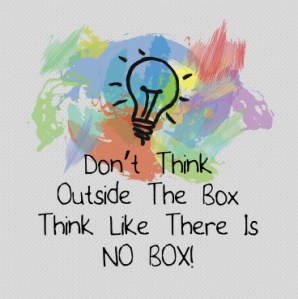Creating something new...

I think the rhyme goes: Something old, something new, something borrowed, something blue... If I apply this to innovation it is all true. Innovation can be old and new. It can be old and re-purposed; borrowed... from another culture perhaps. It can be an idea that can cross pollinate into other cultures or environments. In the New Zealand Maori culture the Koru is a spiral shape based on the shape of a new unfurling silver fern frond and symbolizing new life, growth, strength and peace.

New growth is what innovation is all about. Innovative thought is what is required to:
- solve complex issues facing the planet today... Global Warming is an example of this
- solve any issue that is not as huge as global warming and may be a more social issue
- ensure your relationship with your significant other continues to be refreshed
- design anything
- create anything
- modify anything
Newness is refreshing. Each idea though is just that unless it is moved into the realm of planning - now that can lead to ingenuity all by itself.
It is interesting to review the definitions of Innovation and ingenuity. The Oxford Dictionary defines innovation as the action or process of innovating. For example "innovation is crucial to the continuing success of any organization". Synonyms are: change, alteration, revolution, upheaval, transformation, metamorphosis, reorganization, restructuring, rearrangement, recasting, remodelling, renovation, restyling, variation; new measures, new methods, new devices, novelty, newness, unconventionality, modernization, modernism; a break with tradition, a shift of emphasis, a departure, a change of direction, a new method, idea, product, etc.
Ingenuity is defined by the Oxford dictionary as the quality of being clever, original, and inventive. As an example, "considerable ingenuity must be employed in writing software". Synonyms are inventiveness, creativity, imagination, originality, innovation, resourcefulness, enterprise, insight, inspiration, perceptiveness, perception, intuition, flair, finesse, artistry, genius; cleverness, intelligence, brilliance, mastery, talent, skill; sharpness, astuteness, acumen, acuity, sharp-wittedness, quick-wittedness, quickness, shrewdness; sophistication; thinking outside the box.
Often when considering innovation there is inventive or ingenious thought around the innovative result. In New Zealand we have a saying about the ‘No 8 Fencing wire’; that if we have that we can solve anything. It is a very solution based approach. Often you have to 'think outside the box' or 'go blue sky'. In other words everything is valid and can therefore be appraised. Often solutions to a puzzle around design, concept, issue, challenge come from an oblique angle, but only because the mind of one or many has permission to extend their world around the solution to other potential solutions.

To get to innovation often means letting go of preconceived ideas. I think chefs are really good at this. They are always looking for new and artistic ways to enrich and present food. If you add this ingredient, what happens to the rest of the meal? And it is not just the creative flair; the chef must pay attention to the rest of the meal preparation. Getting a new flavour involved only to burn an existing key ingredient wouldn't work either.
You can see that ingenuity and innovation comes with, like good a meal, an essential key ingredient. This is called trial and error. Is the idea valid? How would you know? What would you test and how? From the result, what would you vary, if anything?
Often persistence is a quality or attribute to success. It is also an attribute to innovation. To be inventive means testing hypotheses. That means test and retest. It may mean a singularity of purpose.
Let me use Thomas Edison and the invention of the light bulb as an example of patience and persistence. In 1879, after performing over 2,500 experiments, he succeeded in making a light bulb using carbonised filaments from cotton thread. Carbonised thread is ordinary cotton sewing thread that has been burned to an ash. The light bulb burned for two days. The electric light took the greatest amount of time and required the most complicated tests of all his experiments.

Another story about Edison shows that he failed 10,000 times in his storage battery experiments. Edison said, "Why, I have not failed. I've just found 10,000 ways that won't work." You can see how Edison's mind worked from this very comment. He did not see failure; he saw instead an opportunity to improve. He knew that each experiment that did not work brought him a step closer to the one that would.
You may ask, “When was this?” In the late 1800's. Can you imaging the diligence; the singularity of purpose and the patience to get to end result. If you think that to a long time... over 10 years by the way, how about this...
John Harrison (1693-1776) wanted to develop the marine chronometer and thereby win the Longitude prize in the 18th century. Wait for this; John Harrison built his first watch to enter the Longitude competition in 1730. He had numerous battles and sea trials and it was not until 1773, after partitioning the King, when he was in 80's that he received monetary reward for his efforts. John Harrison lived another 3 years, but his enduring legacy, after 40 years of dedicated effort is Longitude.

Are you getting the point? Innovation and ingenuity are essential to the creation of something new. However, newness is not enough. To create form from thought often takes time, effort and energy. It is about a singularity of purpose. Bringing the innovation to reality though, that is another journey. It is about belief, overcoming doubt and staying the distance. It can require courage and determination.
So what is it we can do to be more innovative? Well I think there are more than a few things can apply.
- Be creative with the issue you are trying to resolve - Perhaps use mind mapping or drawing to articulate the problem, challenge or issue.
- Brainstorm - Everything is valid. Get all the potential ideas down on paper.
- Involve others. This increases perspective and the synergy that occurs when two or more minds are applied to the find a creative idea, concept or solution.
- Research the planet - Search engines are awesome. Has this idea or concept or challenge been encountered somewhere else before? If so, how does that help?
- Try something similar but different - Look for aligned thinking perhaps through other design principles. Building design might consider breakthrough ergonomic design for example
- Go think in a different environment - sometimes lateral thought occur when you are in the forest on a walk, meditating. Clarity occurs sometimes when least expected because something you encounter in a different environment triggers a related but different train of thought.
The list could go on but I think you get the idea. In this blog I am not going to dwell on the next steps, prioritisation and validation, rather I want to keep you anchored in the realisation that all form follows thought. For something to be real, someone else first thought about that thing with sufficient clarity to enable it to become real. It opens a question about could be real for you?
As I close this blog I urge you to be innovative and creative with your thoughts and actions and if necessary, be persistent through the evolution of the idea and on the journey to reality.
Your comments have been posted, thank you.
Please make sure all required fields are completed.
Please make sure all required fields are completed.
Links to external sites are not supported.
Your email address doesn't appear to be correct.
An error occured while attempting to post your comment, please try again.